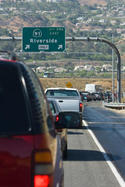Changing demographics and the commodities crash have slowed down the development of poorer countries.
Perhaps it all started with a turn in China’s demographics. Demand growth for commodities has declined sharply from recent years and has resulted in a crash of global prices. Copper is down 54% from its post 2008 peak and down 25% this year alone. Crude oil is down 67% and 39% in the same time spans. In addition to softer demand, prices were negatively impacted by jumps in supply, most notably from shale energy producers in the United States. read more »






















